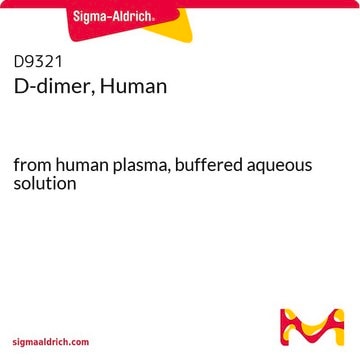Recommended Products
General description
application
- for in vitro cleavage of fibrinogen and fibrin
- as a reference for true component analysis (TCA) and principal component analysis (PCA) of Raman spectra
- as a reference in Raman spectroscopy to study the binding mechanisms and the binding efficiency of the different polyoxometalates (POMs)
Biochem/physiol Actions
Preparation Note
Disclaimer
Storage Class
11 - Combustible Solids
wgk_germany
WGK 3
flash_point_f
Not applicable
flash_point_c
Not applicable
Certificates of Analysis (COA)
Search for Certificates of Analysis (COA) by entering the products Lot/Batch Number. Lot and Batch Numbers can be found on a product’s label following the words ‘Lot’ or ‘Batch’.
Already Own This Product?
Find documentation for the products that you have recently purchased in the Document Library.
Customers Also Viewed
Articles
Cell based angiogenesis assays to analyze new blood vessel formation for applications of cancer research, tissue regeneration and vascular biology.
Highlighting existing and novel fabrication methods for both, solid and hydrogel-based scaffold for tissue engineering applications.
Hydrogel-based biomaterials for cell delivery and tissue regeneration applications are discussed.
Our team of scientists has experience in all areas of research including Life Science, Material Science, Chemical Synthesis, Chromatography, Analytical and many others.
Contact Technical Service









